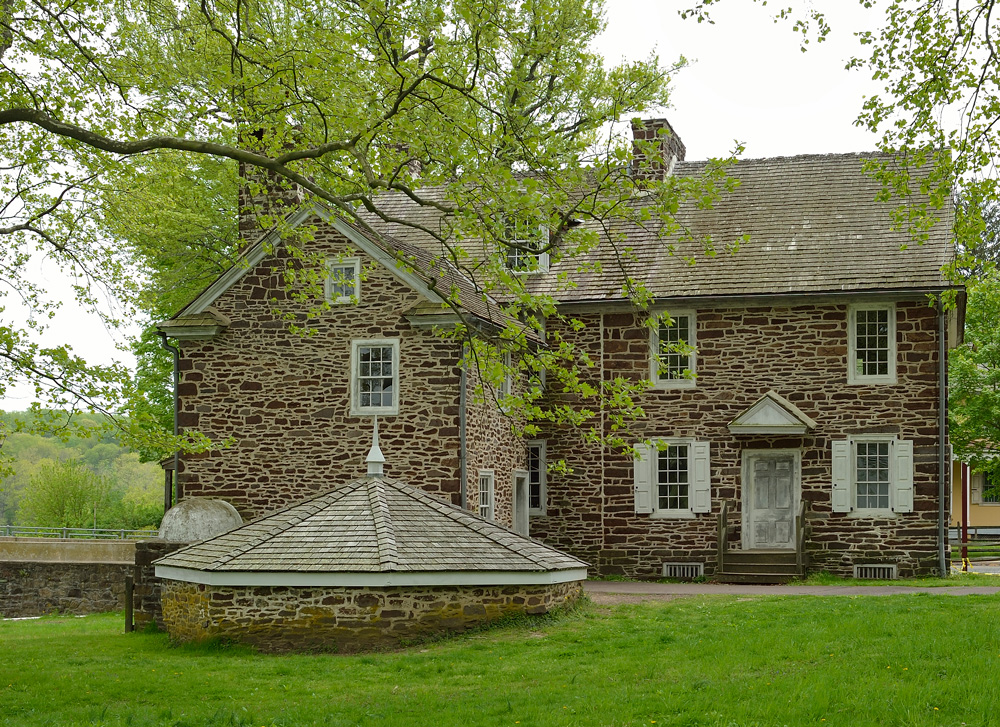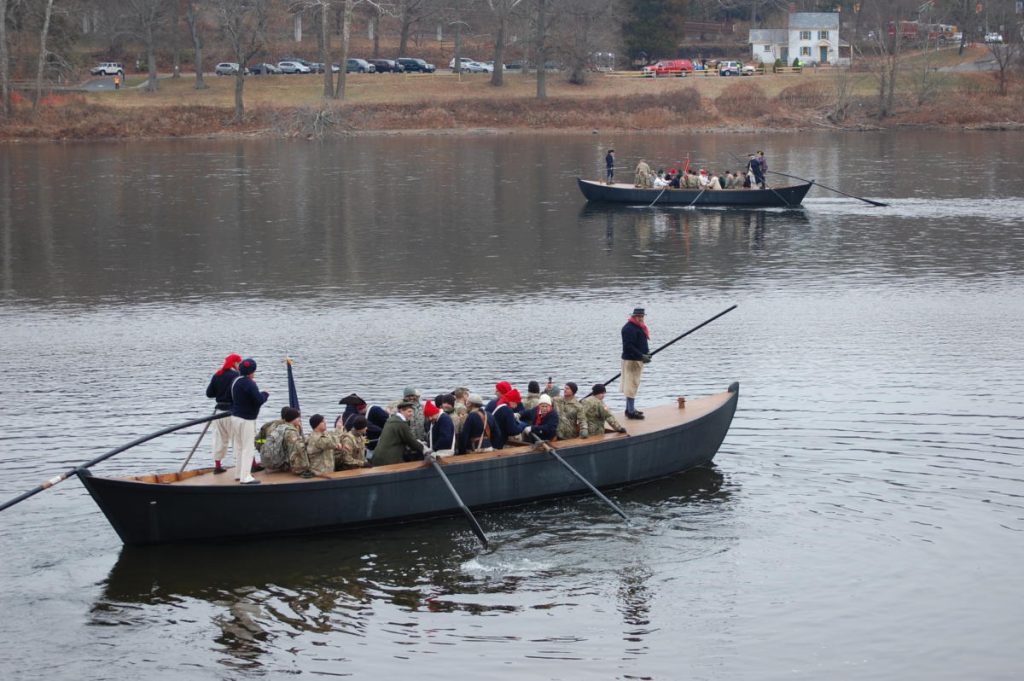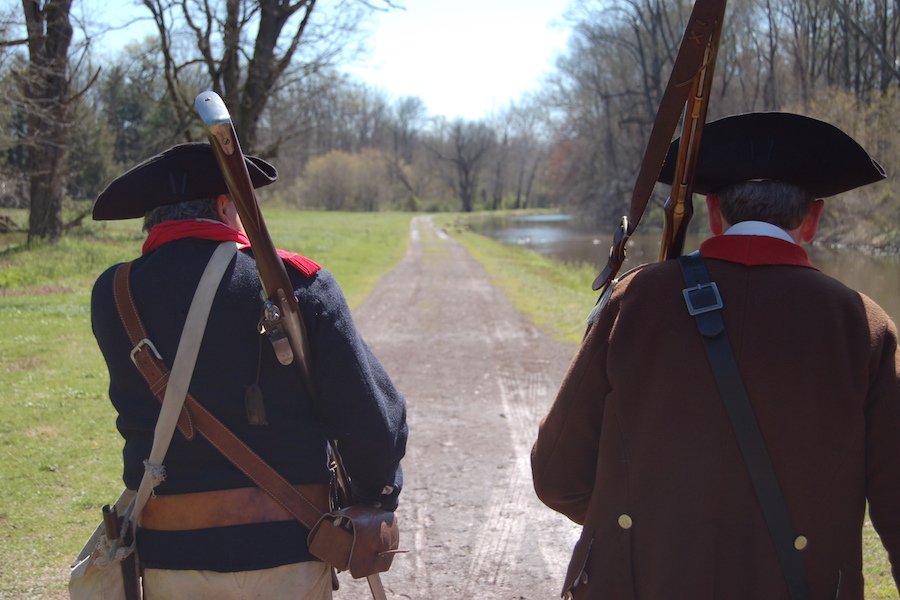The D&L Blog

By Emily Rose Clayton, Digital Engagement Specialist
We’re following the spirit of Independence Day this July, and going south on the D&L Trail to visit one of the most significant historical areas in the D&L Corridor – Washington Crossing Historic Park. While you can find history all along the trail, few moments are as iconic as the image of General George Washington leading the Continental Army from Pennsylvania into New Jersey on Christmas Night, 1776. The surprise overnight assault against British forces proved to be a significant tactical and popular victory, bolstering morale and boosting public support for the American Revolution.
The D&L Trail connects the Upper and Lower sections of Washington Crossing Historic Park, providing a valuable and scenic pathway for visitors exploring the park’s history and scenic trails, whether it’s the Thompson-Neely Homestead and Bowman’s Hill Tower in the Upper Park, or the Visitor’s Center and Historic Village, which contains buildings that stood during the Revolution, in the Lower Park. Just off the trail, the town of Washington Crossing welcomes visitors.
The park is home to over 500 acres of opportunity to explore with the whole family, from sightseeing and picnicking to hiking, biking, and fishing. While passing through on the Delaware Canal State Park Towpath, wildlife enthusiasts can visit the Bowman’s Hill Wildflower Preserve, a non-profit which showcases a diverse collection of native plants on 100 acres of fenced forest with 2.5 miles of hiking trails. Although their offerings are currently virtual-only due to building renovations, curious historians may wish to explore the The David Library of the American Revolution, a specialized research library dedicated to the study of American history circa 1750 to 1800.
While exploring the park’s history, we caught up with Kimberly McCarty, the curator at Washington Crossing, to ask about her favorite stories within the park. She led us to her personal favorite and one of the most touching and memorable areas: the Soldier’s Graves. An unknown number of Continental soldiers are buried on site, all of whom died from exposure, disease, or previous injuries rather than during battle. Of these soldiers, the identity of only one man is known. Kimberly shared with us:
"As far as my favorite piece of site history, I would have to say that would be the story of James Moore. His original headstone is featured in our exhibit Soldier Health in Revolutionary Pennsylvania. Captain-Lieutenant Moore was part of the encampment near the Thompson-Neely House in December, 1776. He was ill during the encampment and died on December 25, 1776. He was second in command to Alexander Hamilton in his New York Artillery company. Though we don’t know a lot about his life, research did allow us to shed some light on who he was."
Moore’s story serves as a glimpse into the lives of the young men who served in the Continental Army. One of six children born to Benjamin & Cornelia Moore in New York City, he moved to Albany and joined the 1st Battalion of the New York Independents, a militia group, and cast a vote in favor of the unit to join the Continental Army. After the defeat at the Battle of Long Island, he retreated with the army, and arrived in Bucks County, Pennsylvania in December, 1776. During the journey, Moore took ill with what was probably typhus, commonly called “camp fever.” On December 25, 1776, as his fellow soldiers prepared to cross the Delaware River, James Moore died at the age of 24.
Stories of the American Revolution like Moore’s are woven throughout the beautifully interpreted landscapes around Washington Crossing. If you’re interested in exploring Washington Crossing Historic Park on the D&L Trail, or any of the other scenic and historic points along the 165 miles from Wilkes-Barre to Bristol, check out our D&L Trail Guidebook and the D&L Discoverer App, both available here! The Guidebook provides a mile-by-mile resource for every need, highlighting trail heads, points of interest, Trail-Friendly Businesses, and even suggested itineraries. The Discover app puts a historian at your fingertips, with curated tours, details about the trail, and on-the-spot info about historic sites through push notifications and geolocation. Together or separately, the Guidebook and App provide a one-of-a-kind experience of the Corridor.













